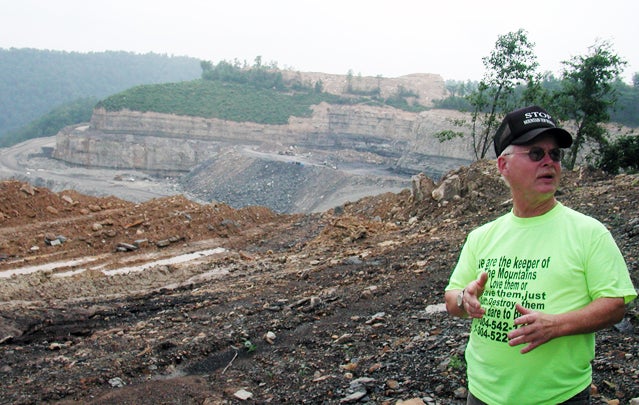
The Appalachian Mountains lost a hero on Sunday, September
10. Larry Gibson, the face of the fight against mountaintop removal coal mining
in Appalachia, died of a heart attack while working on Kayford Mountain in West
Virginia. His family ancestry on Kayford goes back to the 1700s and, since 1986,
Gibson had fought tirelessly to stop the mountaintop removal mining that has
desecrated the peaks surrounding his home.
Scores of mountaintops—more than 500 of them, according to
environmental law firm Earthjustice—have been removed, literally, through
this aggressive strip mining that starts by denuding peaks and then blasting
away rock to get to the rich veins of coal beneath. After retiring early from
General Motors due to an injury, Gibson had moved back home to Kayford and
discovered that the land all around his ancestral home was essentially
destroyed.
He started , an anti-mountaintop removal mining group, and fought this
type of mining doggedly. His outspokenness earned him tremendous media exposure—he regularly gave tours of the mining areas to groups of reporters, and can
be seen in a number of documentary films—but it also earned him numerous
death threats. Gibson fully expected to lose his life during the battle to protect Appalachian peaks.
With the sudden passing of its 66-year-old leader, what will
become of the fight against mountaintop removal mining in West Virginia and across Appalachia?
To
some extent, Gibson had been planting the seeds for an ongoing battle all along.
He would tell visitors to his home: “If you come here and see this and you
don't do anything about it, then you've wasted my time. You have to share what
you've seen, what you've heard. You have to do something to help.”
Vivian Stockman, spokesperson for the and a close ally of Gibson’s, says her group, Keeper of
the Mountains and others will pick up the torch. “We’re not going to give up.
No one who was touched by Larry is going to give up,” she says.
And as the coal industry’s interests start to spread into
untapped sections of West Virginia's mountains, the movement against aggressive
mining techniques is spreading as well. According to a ,
residents of the town of Fayetteville, West Virginia, about an hour and half by car from
Kayford Mountain, are joining the resistance.
Fayetteville has long been a draw for kayakers—thanks to
its proximity to the New River Gorge, and access to the Upper Gauley river—and
for climbers and, more recently, mountain bikers. But a growing tourism industry
in Fayetteville is bringing more lodging and mainstream attractions, such as zip-lines,
ATV tours and whitewater rafting operations, to the area. Thus, it is emerging
as a tourism hotspot.
Tourism and mountaintop removal mining, obviously, don’t
mix, and some locals who have grown up in mining are starting to see the economic longevity and
sustainability of tourism, as compared to mining. In the Sierra article, Jesse Wood interviewed Ray St. Clair, a West
Virginia native and former coal miner, who now runs a private campground in the
area. “Without recreation, we'd be hurting,” he told her. “We'd be dead.”
The support of people like St. Clair, who has roots in
mining, and that of other Fayetteville locals in the emerging tourism industry is vital to the efforts of anti-mining advocacy groups. A company called
Frasure Creek Mining (a subsidiary of Indian mining concern Essar Group) has
obtained some permits for surface mining operations near Fayetteville. It still
needs to obtain more to begin operations and some Fayetteville locals are joining forces with anti-mining groups to fight the project.
In Appalachia, an estimated 2,400 miles of streams have been
buried through aggressive surface mining, so boaters have a good deal to worry
about as mining encroaches the New River Gorge and the Gauley.
“There is huge enthusiasm for tourism and it’s the fastest
growing industry in Fayette County,” says Stockman. But she says gaining the
support of local politicians and trying to bridge the divisions between
pro-mining and anti-mining West Virginians is where the real work begins.
“The state does nothing about bringing us out of the
[coal-based] mono-economy,” she says. “There are all these signs that these
boom times of coal are on the way out, but politicians are beholden to the
industry. Around here the word 'treehugger' is an insult. Environmentalist is a
dirty word,” she says.
When opponents tire of the fight, they should look to these
outtakes of an interview, below, with Larry Gibson, recorded for the documentary .
“Use your anger to get over your fear,” said
Gibson.
—Mary Catherine O'Connor